written by Laurie Tom
Spring brings back a lot of anime with new seasons and spin-offs of older properties that I didn’t expect to be returning. My spring anime sampling is a bit incomplete though.
During the winter season I had mentioned that Amazon’s Anime Strike had entered the simulcasting game, but had too few exclusive titles. That is not true of spring, where Amazon has licensed a whopping 12 titles, just over a third of all new series this season.
For Amazon Prime members, it’s another $5/month, but if you don’t already subscribe to Prime, Anime Strike becomes fairly pricey. I may binge watch the Amazon exclusives later, but for now I’ll be sticking to the older streaming services; Crunchyroll, Funimation, and to a lesser degree Daisuki.
Alice & Zoroku
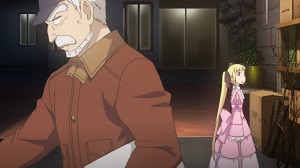
Why I Watched It: It looks like an odd duck for an anime considering that the two main characters are an old man and a young girl with super powers. Protagonists who are adults are in the minority already. One that has gone completely gray with age is almost unheard of.
What I Thought: While the girl with special powers escaping from a government lab story is not very original, Zoroku himself is a breath of fresh air as he’s old enough to not want to put up with all the very anime-style shenanigans of elementary school girls using magic powers to wreak havoc in the city. The fact he gets Sana (presumably the Alice of the title, and code named Red Queen from the Alice in Wonderland stories) and her two pint-sized pursuers to own up to the damage they did and face the police was a hoot. Though he is a cranky old man, it feels like there’s enough of a dimension to him that he’s more than a trope. I like that he recognizes that Sana, for all her powers, is also a poorly raised little girl who needs some proper boundaries set so she can behave like a normal human being (and not an anime character).
Verdict: I might watch later. Though I like Zoroku and his interactions with Alice, and old man with surrogate granddaughter is not a relationship we usually get in anime, the rest of the first episode doesn’t hold up as anything I haven’t already seen before. I need more from the antagonists in charge, rather than the various kids they’re toting around to do their dirty business.
Where to find stream: Crunchyroll (subtitled) and Funimation (dubbed, subscription required)
Attack on Titan Season 2
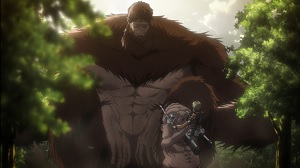
Why I Watched It: Attack on Titan landed with a smash in 2013, spinning off merchandising, video games, spin-off manga and anime series, and even a theme park attraction, in ways that few series have before and certainly not since. But because the series closely follows the source manga, which was less than 30% done at the time, it chose to pause the adaptation after season 1. Twelve volumes and four years later, there is plenty to adapt, and one of my favorite series returns.
What I Thought: Season 2 gets the ball rolling. After a minute and a half recap of the first season (definitely not enough for series newcomers) Attack on Titan picks up exactly where season 1 left off, and from there, launches straight into its next story arc with the mysterious appearance of titans spotted within Wall Rose. There is a fairly brutal death, reminding everyone that this world is cruel even to the best of soldiers, and it’s quickly revealed that the religious priests of the walls know a lot more about the truth of their world than anyone else. All the animation, acting, and the music is true to form, and in some ways even better. It’s almost like it hasn’t been four years since AoT last aired.
Verdict: I’ll be watching! It’s worth noting that Crunchyroll is now using the Funimation naming convention in their subtitles, which will be a bit of a jolt if doing catch-up viewing through CR, as Squad Leaders are suddenly called Section Commanders, Commander Pixis is now spelled Pyxis, among other things. I’m hoping since the manga is so far ahead that any new characters and terminology introduced will use the same names already used in the US translation so we don’t have as many variations across mediums.
Where to find stream: Crunchyroll (subtitled) and Funimation (dubbed, subscription required). It also started broadcasting on Cartoon Network’s Toonami April 22nd!
KADO: The Right Answer

Why I Watched It: Government negotiator meets an alien entity when a mysterious cube appears in Tokyo’s skies, and the story is told from the negotiator’s point of view! I like that a guy in a suit is the protagonist instead of say a military man or yet another teenager, pointing to a much different sort of first contact scenario than we usually get in popular media.
What I Thought: KADO: The Right Answer actually launches with an Episode 0, and while it’s mostly forgettable, it introduces us to our idiosyncratic protagonist Shindo and his personal philosophy on how negotiations should work by showing us a much more mundane land acquisition job. This is important because Shindo is on the passenger plane that gets absorbed by the alien cube when it lands at the end of the episode, and Episode 1 largely focuses on the reactions of everyone outside, while our protagonist is MIA. And it’s a pretty good focus, with people trying to look for realistic ways to rescue the plane and trying different tactics to see what works. Episode 2 looks like it will flashback to show us what happened inside.
Verdict: I’ll be watching! Shindo is a bit idiosyncratic in the way that genius types are often portrayed, but I like his philosophy that negotiation is when both parties get something they want and not just what the negotiator came for.
Where to find stream: Crunchyroll (subtitled) and Funimation (dubbed, subscription required)
Natsume Yujin-cho 6

Why I Watched It: I already like the series, though I hadn’t expected that a sixth season would be greenlight so quickly since there was such a long gap between seasons 4 and 5, but the teenage boy who sees yokai is back again. I’m not sure there is such a thing as too many episodes of Natsume Yujin-cho, but on the other hand I’m not sure what new material the series can add since by it’s nature it’s been episodic.
What I Thought: Natsume Yujin-cho continues its routine of handling small, personal plots in a world where yokai, Japanese spirits, exist but hardly anyone can see them. This time around Natsume helps a yokai with a pot stuck on its head. The grateful yokai, a Days Eater, decides to repay Natsume by restoring his youth, which results in Natsume being turned into a small child and forgetting his teenage memories. Watching Nyanko-sensei, Tanuma, and Taki try to regain Natsume’s trust, when the child version of him is used to be pranked and manipulated by yokai, serves as a bittersweet reminder of what Natsume has gained since he was a kid.
Verdict: I’ll be watching! It might not be top of my list, but whenever I need a feel good pick-me-up, Natsume Yujin-cho doesn’t disappoint.
Where to find stream: Crunchyroll (subtitled)
What do you do at the end of the world? Are you busy? Will you save us?

Why I Watched It: I have to say that as far as atrociously long titles go, that is one of the worst. On the other hand, what kind of miserable world is it that asking those three questions is reasonable at all? So in that way, yes, the title got my interest, and I’ll be referring to the series as WorldEnd in the rest of this write-up since that’s the abbreviation used in Crunchyroll’s search field.
What I Thought: Over 500 years ago, humanity lost a war and has largely been wiped out to the point where Willem Kmetsch may very well be the last of his kind. The world is now a collection of floating islands ruled by beast people, and while there are those without fur or scales like a human, they are viewed as disfigured by society. One of Willem’s friends convinces him to make something of his life and take a job at a “warehouse” storing various weapons, which turn out to be a bunch of small humanlike children. WorldEnd is unusual in that its opening and post-credit scenes are incredibly melancholy in showcasing Willem’s loss during the war 500 years ago, but sandwiches much brighter and light-hearted scenes between them with the kids.
Verdict: I’ll probably watch. This one surprised me, as I wasn’t expecting this mix of light and heavy material. The only thing that bugs me is Willem’s age and I’m not sure if it’s just an art style issue. We don’t know how he’s gotten unstuck in time yet, but physically he looks like an older teen, which doesn’t jive with the fact that he apparently ran an orphanage and the kids there referred to him as their dad, even the older one who had to be a teenager.
Where to find stream: Crunchyroll (subtitled) and Funimation (dubbed, subscription required)

Laurie Tom is a fantasy and science fiction writer based in southern California. Since she was a kid she has considered books, video games, and anime in roughly equal portions to be her primary source of entertainment. Laurie’s short fiction has been published in Galaxy’s Edge, Strange Horizons, and the Intergalactic Medicine Show.
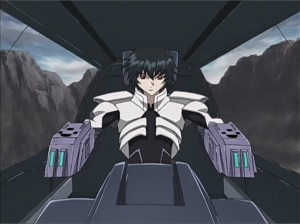 Fafner: Right of Left wasn’t available to English speaking audiences for a long time. Animated back in 2005, it’s the second oldest entry in the long running Fafner series, but never made it stateside, likely due to its status as a direct-to-video prequel.
Fafner: Right of Left wasn’t available to English speaking audiences for a long time. Animated back in 2005, it’s the second oldest entry in the long running Fafner series, but never made it stateside, likely due to its status as a direct-to-video prequel.

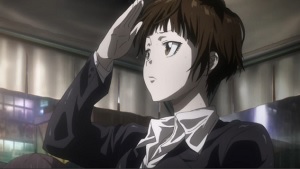 Psycho-Pass is an original self-contained anime from 2012 that I missed during initial broadcast. I’m generally not a big cyberpunk dystopia fan, so I only came back when I kept hearing about it. This review covers the first series, which is stand-alone.
Psycho-Pass is an original self-contained anime from 2012 that I missed during initial broadcast. I’m generally not a big cyberpunk dystopia fan, so I only came back when I kept hearing about it. This review covers the first series, which is stand-alone. The Prey of Gods is a science fiction and fantasy novel from Harper Voyager, the premier novel by Nicky Drayden.
The Prey of Gods is a science fiction and fantasy novel from Harper Voyager, the premier novel by Nicky Drayden.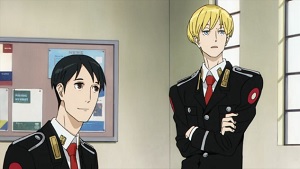
 I am a lifelong Dr. Seuss fan, so I was very excited to hear that Sneetches: The Musical. In case you haven’t heard of it, “The Sneetches” is a children’s story by children’s author and illustrator Dr. Seuss (the pen name of Theodor Geisel), published in the collection The Sneetches and Other Stories originally published in 1953 and still available in print.
I am a lifelong Dr. Seuss fan, so I was very excited to hear that Sneetches: The Musical. In case you haven’t heard of it, “The Sneetches” is a children’s story by children’s author and illustrator Dr. Seuss (the pen name of Theodor Geisel), published in the collection The Sneetches and Other Stories originally published in 1953 and still available in print.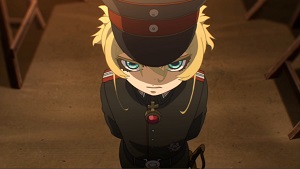
 Did you know that in the early 20th century the United States Congress considered a bill to populate the Louisiana bayou with hippopotamuses to serve as a new source of meat during a meat shortage? In River of Teeth, we get to see an alternate history where that law passed and some decades later there are hippo-riding “hoppers” which are something like cowboys.
Did you know that in the early 20th century the United States Congress considered a bill to populate the Louisiana bayou with hippopotamuses to serve as a new source of meat during a meat shortage? In River of Teeth, we get to see an alternate history where that law passed and some decades later there are hippo-riding “hoppers” which are something like cowboys.




 The Lobster is an internationally-produced 2015 dystopian black comedy film.
The Lobster is an internationally-produced 2015 dystopian black comedy film.